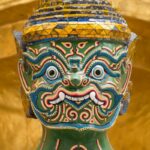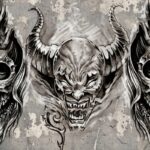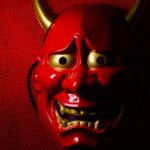Yokai are an important part of Japanese culture and folklore, but there are many different types of yokai. Most yokai appear in tales as monsters or beasts, but others appear as ghosts or spirits.
So, what are the origins of yokai (see also ‘What Is The Most Famous Yokai?‘)? Were any of them human at one point? If so, which yokai were once humans and what happened to them?
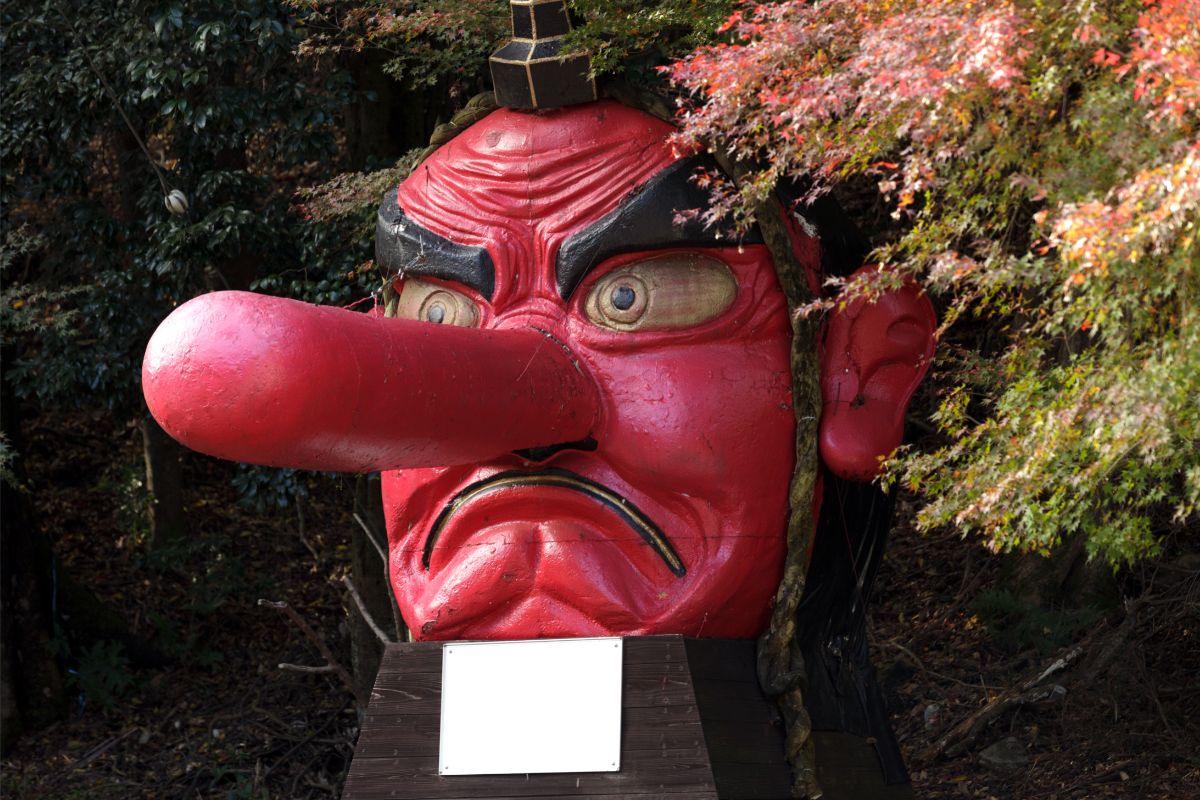
Here, we are going to be taking a closer look at yokai and their relationship to humans. If you want to know the answers to the above questions then just check out the information below!
What Are Yokai?
Understanding what yokai are will help you understand where yokai come from. So, what are yokai?
Yokai (see also ‘Are There Friendly Yokai?‘) are supernatural beings that originate from Japanese folklore. They range from spirits which reside in areas like rivers or mountains, or ghouls or monsters which prey on humans.
Some are shape shifting animals that serve humans. Basically, the term ‘yokai’ is a very broad term which covers a lot of fantastical beings and spirits in Japanese folklore.
Because each yokai is so unique, so are their origins. Some yokai are minor deities, others are the embodiments of strong emotions like dread or fear. Some are just spiritual beings which purely come into existence on their own.
So, were any yokai once human?
Yes! There are actually lots of yokai who were once human but later became yokai through tragic circumstances. These types of yokai tend to be ghosts or spirits from souls who died in violent or extreme ways.
If you want some examples, then check them out below!
Yokai Who Were Once Human
Yama-Uba
The yama-uba are mountain witches who can appear as young beautiful women or withered old crones.
They appear in lots of different tales in Japanese folklore. In some tales, they attack travelers passing through the mountains. One tale tells of how a yama-uba once helped a woman give birth only to eat her baby.
Not all depictions of yama-uba are bad. In one tale, a yama-uba raises a baby orphan while in another, a yama-uba gives treasure to a kind sister.
Yama-uba are yokai who transformed from women. Some of these women fled their homes to live in the wilderness and transformed into yama-uba over time.
Others are the result of the mythical practice of ubasute. Ubasute is when a family or community abandon their elderly or infirm women up a mountain and leave them to die. Instead of dying, the women turn into cannibalistic yama-uba instead!
Yuki-Onna
This type of yokai is a famous one due to its popularity in literature and film. This is the yuki-onna, a yokai which is often described as Japan’s version of a snow vampire.
They appear as beautiful women who wander around in snowy areas and prey on travelers. They feed on the life source of humans and suck the life out of them after freezing them solid.
Some Japanese legends talk about men who fell in love with a yuki-onna, and some even show men marrying and living with a yuki-onna. Other legends show yuki-onna who led their would-be victims back to safety and let them go.
So, the yuki-onna can be dangerous or helpful, depending on which legend you are reading.
The origins of yuki-onna say that they are the spirits of those who had died in the cold. That is why yuki-onna have a strong connection to snow and winter, and why they take on the appearance of beautiful women.
Gashadokuro
Gashadokuro are yokai in Japanese folklore which appear after bloody battles and wars. They take the form of giant skeletons, are over 32 feet tall, and have glowing yellow or green eyes.
They wander around during the early hours of the morning and eat any humans they find. Japanese tales talk about the horrible clattering sound their teeth make.
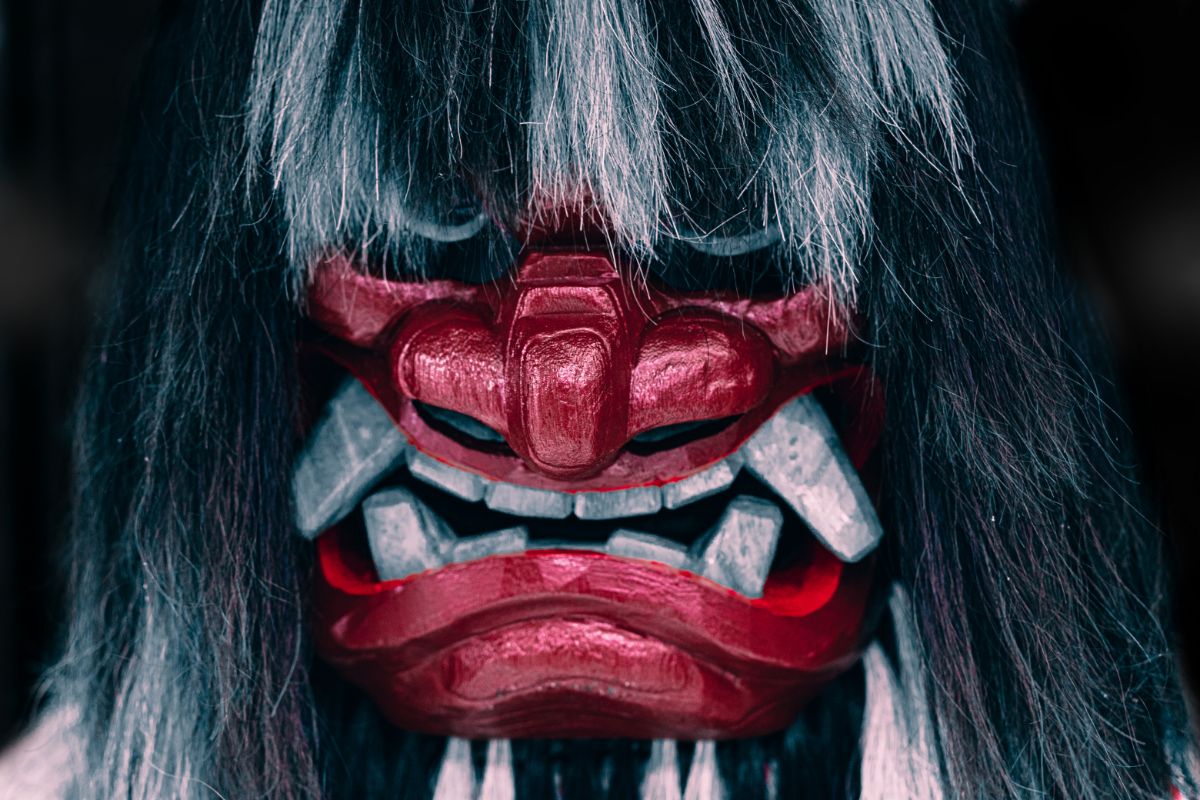
All gashadokuro were once humans – soldiers who died on the battlefield but were not given proper funeral rites. Some folktales talk of gashadokuro who were people who died of famine or illness.
Overall, it seems that gashadokuro are born when large groups of people suddenly die and are not properly buried.
Then, their bones all merge into one and the gashadokuro go on a rampage until all of their anger is burnt out. The bones then fall apart and the gashadokuro is no more.
Ubume
Another type of yokai born from the spirit of a deceased woman is the ubume. The ubume have a tragic origin behind them as they were once women who died during childbirth.
As a result, ubume appear as women and carry a baby with them.
In most folktales, a ubume will hand their baby to a passerby and ask them to hold it for a moment. Then, the ubume disappears – and the baby turns out to be nothing more than a rock.
Other than this, ubume are harmless yokai who simply wander around with the child they never got to hold.
It’s a very sad tale and one that had a big impact on ancient Japan. Women who died prepartum would have the fetus removed from their bodies and placed in their arms when buried. This was to try and prevent an ubume from forming.
Kuchisake-Onna
Our final yokai is one that is more contemporary and considered a Japanese urban legend. Despite this, the kuchisake-onna is a modern yokai that comes with a terrifying tale.
The kuchisake-onna was originally a woman who somehow suffered a facial mutilation during her life. The reason why varies from story to story. Some say the woman was adulterous and the mutilation was her punishment from her husband.
Others said that it was a medical procedure gone wrong. Nevertheless, the woman had a slit mouth from ear to ear.
The woman becomes a vengeful spirit after her death and becomes a kuchisake-onna. Due to jealousy and anger, kuchisake-onna will find victims and ask them if they think she is beautiful.
If they say no, she will kill them with the blade she carries. If they say yes, she will open her mouth to show the extent of her mutilation and repeat the question.
If the answer is still yes, then she would mutilate her victim to match her appearance.
The kuchisake-onna has appeared in many different media including anime, video games, and movies. During the 1970s, there was mass hysteria in Japan over fears of a kuchisake-onna but these fears were born from nothing but rumors.
Can Yokai Turn Into Humans?
So, there are many examples of humans turning into yokai but what about vice versa?
There are also a lot of different tales about yokai who would transform into humans and other creatures. Some examples include the obake, the tanuki (the yokai, not the animal), the zashiki-warashi, and much more!
Final Thoughts
Yokai is a broad term used to describe Japanese spiritual and paranormal beings.
This means that there were bound to be plenty of yokai whose origins were once human. Most of the time, they are the spirits of people who died suddenly and horribly – like with the Ubume or Yuki-onna.
Their spirits became yokai and now their stories continue in Japanese folklore for centuries to come.
- How Much Money Can You Make Teaching English in Japan? - December 12, 2022
- The Best Places to Teach English in Japan - December 9, 2022
- The Best Credentials for Teaching English in Japan - December 8, 2022

